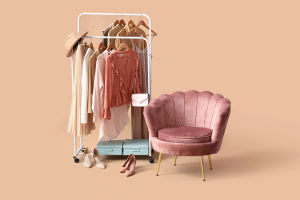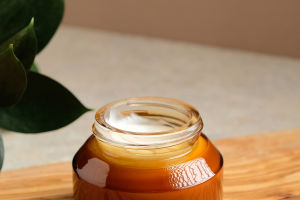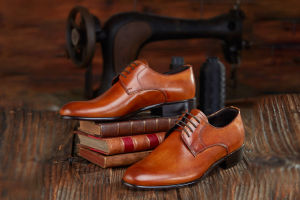We all know that stepping into the world of makeup can feel overwhelming. With so many products out there, how do we even begin? Should we buy everything or just stick to the basics?
The truth is, more makeup doesn't always mean better makeup. The key is to find what works for us and keeps things simple. So, let's go through the must-haves for beginners and how to choose the right ones!
Sunscreen – A Must-Have for Outdoor Lovers
If we spend a lot of time outside, sunscreen is a non-negotiable! A lightweight, fast-absorbing sunscreen that forms a protective layer on the skin is the best choice. It keeps our makeup fresh and protects our skin from harmful UV rays.
Primer – For Everyday Wear
A good primer helps control oil and evens out skin tone. Some primers also come with SPF, making them great for daily use when we're not under strong sunlight for long hours. If we use a primer with SPF, we can skip sunscreen, but layering too many products can cause makeup to cake up or slide off.
Foundation – Choosing the Right Type
There are several types of foundation, and picking the right one depends on our skin type and coverage needs:
• Liquid foundation: Lightweight and easy to blend, suitable for all skin types.
• Cream foundation: Thicker with better coverage, great for skin with blemishes.
• Stick foundation: Highly pigmented and long-lasting, ideal for those who need extra coverage.
• Cushion foundation: Hydrating and sheer, perfect for touch-ups throughout the day.
For the perfect match, test the foundation on the jawline in natural light. Trying at least three close shades helps us find the most natural fit!
Concealer – Keep It Simple
For beginners, avoiding multi-colored concealer palettes is a smart move. A simple skin-tone concealer is easier to blend and won't leave noticeable patches on our face.
• Liquid concealer: Lightweight, hydrating, and great for minor imperfections. Best for dry skin.
• Cream concealer: Thicker and more pigmented, ideal for covering scars and dark circles. Best for oily skin.
Setting Powder vs. Setting Spray – What's Best?
Both help our makeup last longer, but they serve different purposes:
• Setting powder: Absorbs oil, leaving a matte finish.
• Pressed powder: Adds a bit of coverage while setting makeup.
• Setting spray: Locks in makeup and gives a natural glow.
For long-lasting makeup, setting spray and powder can be used together!
Eyebrow Products – Powder or Pencil?
Eyebrows frame our face, so finding the right tool is essential:
• Eyebrow powder: Soft and natural-looking, perfect for those with well-defined brows.
• Eyebrow pencil: Great for shaping and filling sparse brows, but requires a steady hand.
For a more polished look, we can use both! First, define the shape with a pencil, then soften it with powder.
Eyeshadow – Start Simple
If we're new to eyeshadow, a single shade is the easiest to work with. A neutral matte shade can enhance our eyes without looking overdone. Once we're comfortable, a palette with matte and shimmer shades in natural tones is a great next step.
Avoid palettes with extreme colors, high saturation, or glittery shades for daily looks, as they can be harder to blend.
Choosing Mascara – The Right Brush Matters
Big, thick mascara brushes can be tricky for beginners, often leading to clumps or smudges. A thin, precise brush is much easier to control and creates a clean, natural effect.
Eyeliner – Gel or Liquid?
• Gel eyeliner: Soft and forgiving, perfect for beginners. It's easy to blend and correct.
• Liquid eyeliner: Precise and bold, but requires a steady hand. Best for those experienced with eyeliner application.
A fine-tip gel eyeliner in a soft brown shade is the easiest for beginners! It's less harsh and more natural-looking than black.
Lipstick – Pick the Right Shade
The right lipstick can instantly brighten our face. We should choose shades that complement our skin tone:
• Warm skin tones: Coral, orange-red, and rust shades look best.
• Cool skin tones: Pink, berry, and mauve shades work beautifully.
For beginners, a versatile, everyday shade is a great start. Matching our blush and lipstick color also helps create a cohesive look.
Blush – Finding the Right Texture
Blush adds life to our face, but the type matters:
• Powder blush: Easiest to apply and blend. Great for beginners.
• Cream blush: More natural-looking but requires blending skills.
• Liquid blush: Long-lasting but tricky to control.
A soft peach blush is beginner-friendly and suits most skin tones.
Highlighter – Glow the Right Way
Highlighter enhances our features, but it should be subtle:
• Matte highlighter stick: Applied before setting powder for a natural look.
• Pressed powder highlighter: Used after setting powder for added radiance.
• Liquid highlighter: Best for targeted glow on the cheekbones and nose.
Avoid chunky glitter highlighters, as they can emphasize pores instead of enhancing our glow.
Contour – Powder vs. Cream
• Cream contour: More natural but requires blending skills. Best for dry skin.
• Powder contour: Easier to apply and blend. Ideal for oily skin and beginners.
A light contour applied under the cheekbones, jawline, and nose bridge can subtly define our features.
Starting our makeup journey doesn't mean we need a huge collection of products. The key is to find what works for us and stick to the essentials. A well-chosen set of makeup products will make getting ready easier and more enjoyable!
What are your favorite beginner-friendly products, Lykkers? Let's chat in the comments!


